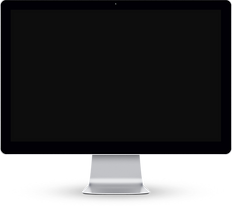
Welcome to my portfolio
I'm a senior UX leader with a track record of making digital products really easy to use and a lot more successful.
For the last few years, I've basically been a design problem-solver for big companies and growing businesses around the world.
I've taken the lead on making sure everything looks and feels consistent (what we call 'Design Systems') which actually speed up our engineers' work by a huge margin (like 30% faster!). My work isn't just about making things pretty; it's about figuring out what customers truly need using data, leading design for huge mobile and web platforms (the kind used by hundreds of millions of people), and guiding teams to launch new features faster.
Whether I'm helping a growing business get ready for the global market or fixing a clunky corporate tool, my goal is always the same: great design that delivers real business results. I’m happy to walk you through my process in person or when reviewing a role together.
Case Study 1. Merger to Market: Unifying $1.5B+ Product Portfolios
UX Design Lead: Strategy, Research & Systems - Neogen Corp
Problem & Context
"Powerful Tools, Broken Experience."
Neogen’s digital products were powerful in capability but difficult to use, plagued by inconsistent interfaces and fragmented workflows.
Design decisions often ignored real user needs, and the newly formed UX team lacked a mature process for integrating design across product —
creating low quality scores and limited strategic impact.
Strategy & Approach
"Who We Are, What We Do,
How We Work → How Might We."
Through empathy and analytics, I successfully positioned the design team as a strategic partner rather than a reactive "cleanup crew."
This involved shifting our processes from fixing bugs to proactive, cross-functional collaboration that shaped the product direction.
This transition was crucial, as it brought key stakeholders together to agree on a fundamental principle: the only way to fix Neogen’s fragmented digital ecosystem was by prioritizing foundational, long-term work (like a Design System) over quick, short-term fixes.
This stabilized design decisions and ensured a cohesive product future.
Outcomes & Impacts
"Driving clarity through research, collaboration, and measurable impact."
I initiated a comprehensive audit using guidelines like WCAG and Design Thinking, gathering critical insights through stakeholder workshops and contextual inquiries to diagnose the current fragmented experience.
The audit results were used to craft a clear UX Workplan and Timeline that defined effort-vs.-impact metrics for all departments—Design, Product, and Customers.
This strategy successfully brought order and discipline for:
Design
Maintain a split focus on building the foundational design system and supporting new feature requests for maximum quality and scalability.
Product
Continually identify high-value business opportunities and new product initiatives, prioritizing them against the current development queue to drive the most measurable impact.
💡 Impact Summary
-
Portfolio Cohesion
-
Systemic Efficiency
-
Strategic Growth
-
Measurable Results






///////////////////////////////////////////////////////////////////////////////////////////////////////////////////////////////////
Case Study 2. Overhauling a Global HCM Platform for 267M Users
UX Architect Lead: From Process to Production - Alight Solutions
Problem & Context
"Solving for Complexity and Fragmentation."
As the POC for a major platform's overhaul, I learned that Alight’s customer care reps were stuck with a 25-year-old legacy desktop apps that was slow, fragmented, and notoriously complex.
In another track, design team faced the immense task of applying a new Design System across the entire enterprise—all while battling overlapping sprints, navigating multiple independent teams, and managing a heavy, growing development backlog.
The design challenge was therefore much larger than just a simple redesign.
Our mandate was clear: we needed a systematic and scalable process to deliver massive, fundamental change, while "under construction", and under extremely tight timelines.
Strategy & Approach
"Design as Partner, Not Order Taker."
Facing a constant problem of late engagement that was fundamentally hindering our delivery, I championed a critical process change: I moved the team's focus to the left side of the development cycle.
This required two core actions:
1. Establishing a dedicated design sprint to stay ahead of the development team
2. Requesting a seat in the development planning phase to actively influence core requirements upfront
I was looking to make sure that UX was "baked in"—not bolted on—ensuring that business goals inherently met user needs.
This strategic shift immediately resulted in a 25% reduction in the design-to-development cycle time.
Outcomes & Impacts
"Design & Business Alignment Drives Speed to Market."
My mission on the platform overhaul was simple: build the foundational user experience that would support all future growth.
Using a lean, user-centered approach, I defined the core architecture—from user personas and journey maps to site navigation—with my team supporting the visual design.
My strategy was strict prioritization: We focused on delivering the absolute must-have features first. Critically, every concept was rigorously user-validated against four key objectives: user needs, business goals, market potential, and technical limits.
This disciplined process allowed us to rapidly launch a working Minimum Viable Product (MVP).
We achieved immediate speed to market and established a clear, validated roadmap for all subsequent feature releases.
💡 Impact Summary
-
Accelerated MVP Launch
-
Team Alignment
-
Reduced Rework
-
Scalable UX Framework
-
Increased Speed to Market
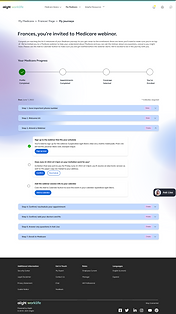
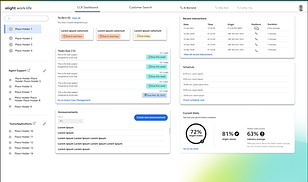

///////////////////////////////////////////////////////////////////////////////////////////////////////////////////////////////////
Case Study 3. Walgreens Pharmacy App: Fluent Design System Overhaul
Lead UX Designer: Driving Supply Chain Efficiency - Walgreens
Problem & Context
"The Cost of Supply Chain Complexity."
The Approach & Process
"Quantifying Effort for Project Approval."
The Challenge: The old pharmacy app was deeply flawed. Its complex, slow workflows created costly delays and frustration for pharmacists working in a high-pressure environment. These inefficiencies directly hurt the business goals.
The Opportunity:
Design team proposed updating the pharmacy app to the modern Microsoft Fluent Design System. This required a full rebuild of the existing application.
The Roadblock:
Fixing the app was held back by a few issues: a slow internal response from the Supply Chain team to this change. The design team first had to earn the permission and define a clear strategy just to start the necessary work.
To secure the necessary buy-in, the Design team conducted an internal "roadshow" to socialize the project roadmap and level of effort.
Our clear message compared the app's current user pain points against its original goals, detailing proposed fixes and what the changes meant for internal teams.
Stakeholders ultimately approved the proposal after we presented a quantified level-of-effort model (small, medium, high impact), which successfully linked every proposed change to a measurable business outcome.
Outcomes & Impacts
"Validated Design Shifts: Faster, Real-Time Task Completion."
I managed the core Information Architecture for both the Design System and the Pharmacy App. After implementing a rapid prototyping track, every concept was continuously tested against user needs, business goals, and engineering limits.
We initially built a functional Table View, but I pushed for further testing. I found that constant clicking was slow and frustrating.
My ultimate solution was a List View with real-time detail on hover (see attachment). This single change eliminated clicks, creating a measurably faster, easier workflow that earned enthusiastic stakeholder approval and directly boosted high-pressure pharmacy efficiency.
💡 Impact Summary
-
Team Alignment
-
Reduced Operational Cost
-
Accelerated Fulfillment Speed
-
Scalable UX Foundation
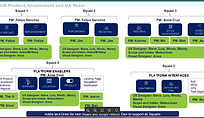
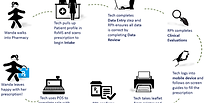





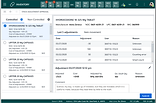



///////////////////////////////////////////////////////////////////////////////////////////////////////////////////////////////////
This Section is available upon request.
I'm happy to walk you through the specifics and results. Thank you!
Lead Information Architect/ User Experience
UPTAKE - Industrial AI & Analytics
Summary
As the UX Design Lead, I directed cross-functional teams in modernizing Uptake’s industrial AI and analytics platforms for the rail, energy, and manufacturing sectors.
Leveraging UX best practices, I simplified complex data workflows, which directly boosted task completion and usability metrics across the platforms. Crucially, I developed and implemented a unified Design System.
This move significantly increased team efficiency and firmly established Uptake as a user-focused leader in the enterprise AI space.


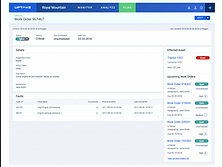
Senior User Experience Designer
Health Care Service Corporation
Summary
Amid a major organizational shift—moving the Design team from Marketing to IT, I was tasked with the overhaul of Medicare portal and websites redesign for several business units across Blue Cross Blue Shield for IL, NM, MT, OK, TX.
In cross-functional collaboration with offshore development team, we delivered responsive web experiences, member-only modern, ADA-compliant self-service digital tools.
